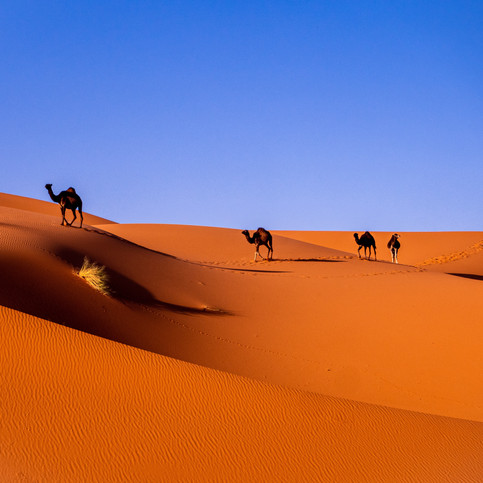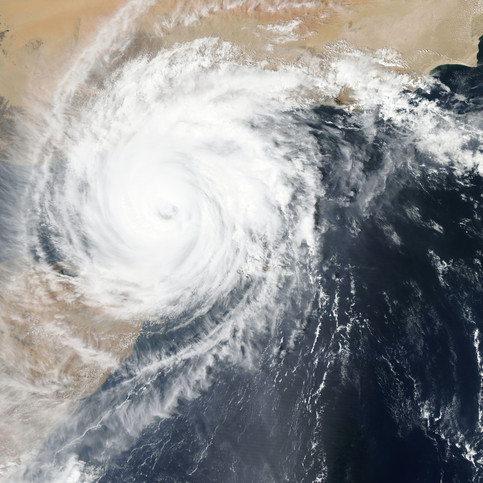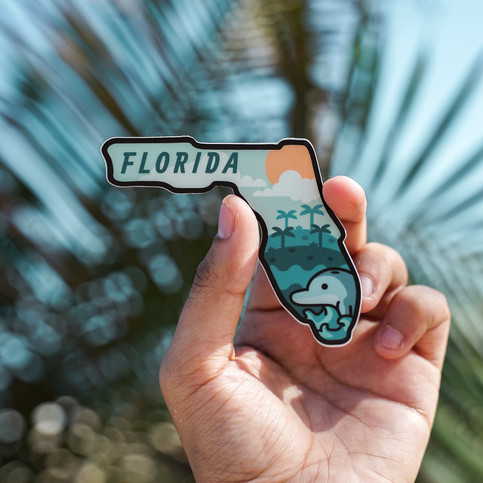By: Isabela Claret Torres, MSc, Ph.D.
Florida Hurricanes
Hurricanes in Florida are formed in Africa. We are all connected! We live in globalized world. And I don’t mean about economy, internet or politics, I am talking about the environment. What someone does in the Amazon in Brazil can be felt thousands of kilometers away. Inside the country the Amazon provides rain to the southeast states of Brazil, so putting down the forest will make the southeast drier and with water scarcity. But we are connected much further away, through the atmosphere and the ocean all the planet is connected.
El Niño
I can bet that one time in your life you heard about the “El Niño”. Why? Because the El Niño affects the whole planet. And few people knows that this phenomenon happens on the Pacific coast of Peru in South America. In the central part of the Pacific Ocean the winds change direction affecting the circulation of the water masses in the ocean. In common atmospheric conditions, cold water masses of the ocean that are rich in nutrients and due do difference in density this cold water mass stays below the hot waters which are poor in nutrients.
The winds make these layers to mix (mixing the nutrients) and increasing primary productivity and consequently the production of fisheries and ocean wildlife. During El Niño which occurs in an interval of 2 to 7 years the winds blow in a different direction. The upwelling of the cold nutrient rich water does not happen and there is the heating of the surface waters in coastal Peru. This decreases the production of fisheries in the coast of Peru and Chile, but with also other consequences that will affect the climate in the whole world.
The word El Niño means “little boy” in reference a Jesus Christ as the phenomenon occurs during Christmas time in December. The El Niño causes exceptional rain in the west coast of South America, and droughts in Indonesia and Australia. In USA the winters are warmers in the central region but in the south, there is more rain. Oregon, Washington and others in the pacific northwest of USA have a drier winter. Europe has very hot summers and Africa the droughts are common in all the continent.
La Niña
Alternatively, there is La Niña (little girl) which is the opposite phenomenon. There is a decrease in temperature of surface water in the Tropical Central and Oriental Pacific. In Brazil La Niña increase the rains in the Northeast region, and cause cold summers in the Southeast. In USA La Niña is responsible for increase of cold weather in the west coast, which also occurs in Japan. Asia and Central America must deal with more storms. In Australia the temperatures will be higher with more risks of wildfires. As I said we are all connected!
Florida Hurricanes Start in Africa
I had this wakeup call when I was doing my PhD at the University of Florida (Go Gators!). I learned to watch for hurricanes during hurricane season by following the storms that were leaving northern Africa, by following the National Oceanic and Atmospheric Administration. And mine was fixed between Africa and the USA. And in the years I lived in USA I saw many storms getting out from Northern Africa and get into the Atlantic Ocean.

Sometimes they will just become a tropical storms, which I, coming from Brazil, am used to (we have it every summer). But sometimes I follow the storms become huge hurricanes and come towards the Caribbean and USA. And little did I know that scientists have long known that hurricanes in Florida and those that hit Central America, the Caribbean and the USA are born in northern Africa. And the storms come from the weather in one the driest part of the planet the Sahara desert. The storms start up in the Sudanese highlands (the same place the Nile begins), and condenses into thunderheads with thousand miles high.
Hurricane Charley
Close to me were the two oh the hurricanes that hit Florida in 2004: Charley (Category 4) which left us without electricity, water and in a curfew for almost a week. Some friends lost everything. And then came Frances which I was alone with my dog and freaking out because of the experience with Charley. And there was Jeanne that did not bother us in north Florida.
Hurricane Katrina
And let’s not forget about hurricane Katrina in 2005, I saw it born in Africa, followed through the Pacific Ocean, saw it missing Florida but hitting New Orleans and causing so much destruction in the city and the State of Louisiana.
Hurricane Formation
Although the scientists know, they don’t have evidence about the mechanisms that the dust from the desert blown into the tropical storm in Africa, makes the storm stronger. As stated in Nasa website: “Dust is one factor in hurricane formation, but there are many others, too. Atmospheric winds, humidity, sea-surface temperature—they all play a role. The effect of dust may be “situation dependent,” meaning it depends on what the rest of the atmosphere is doing when the dust hits”.
One thing is for sure. The storms that leave Africa hit a cold Atlantic and lose a little power. Then they reach the middle hot Atlantic and the tropical storms pull up humidity and stem from the hot surface waters of the ocean feeding up to become a Hurricane. And as hot the oceans are hurricanes became bigger and bigger and change in categories. That is why when the hurricane hits land, they start losing power. The hot ocean waters ocean are no longer able to feed them.

As we connect on solving climate change, in El Niño years, there will likely be fewer tropical storms and hurricanes, which lowers the risk to the United States. But it just need one big hurricane to do the damage. Hurricane Andrey that hit hard Miami in 1992 was during an El Niño year. In the other side, with the Global Climate Change the ocean waters will become warmer, with consequently more frequent and stronger storms and hurricanes.
Carbon Offsets
We at Xeero.io also connect the world! We are a platform that connects you to people in another part of the planet earth. In our marketplace you can buy carbon credits and use them to offset your carbon footprint.
Carbon Footprint
What is a carbon footprint? It is everything you do that produces greenhouse gases (i.e. carbon dioxide and methane). Your footprint leaves behind these carbon based gases into the atmosphere when you are driving, traveling, eating a meat, producing garbage, taking a shower or even turning on a lamp. It is so many things that we do that produces carbon contributing to the Global Climate Change. Want to change that? Want to offset your carbon footprint? We at Xeero.io can help you. Our platform connects you that wants to offset your carbon footprint to the carbon credit producers (people that has projects that takes out carbon from the atmosphere, reduce drastically its emission or don’t produce to generate electricity).
It is a simple, safe, and easy way to give your contribution to fight Global Climate Change. Remember we are all connected. Funding credits producers in other part of the world you are helping you in your country. One little step to do something big together. We all need to do our part! We are all connected!
About the Author:
Isabela started her work with the environment in 1993 as a Biology Bachelor student at the highly regarded Federal University of Minas Gerais (UFMG/Brazil). Later she joined the Graduate Program on Ecology, Conservation and Management of the Wildlife of the same University (UFMG/Brazil) where she received her Masters degree in 1999. Later, she received her Ph.D. on Soil and Water Science at the University of Florida (USA). During her Ph.D. studies she received an Outstanding Student Poster Award at the ASLO (American Society of Limnology and Oceanography) 2006 Summer Meeting held in Victoria (Canada). After working for the State Government Secretary, consulting environmental company and watershed management company she began her post-doctorate in the Geography Department at UFMG (Brazil). Throughout her career she gathered knowledge and specialized on Biology, Ecology, Soil Science, Limnology, Paleolimnology, Biogeochemistry, Organic Geochemistry, Metal and Environmental pollution.
References:
To See the Birth of an Atlantic Hurricane, Look to Africa | WIRED
El Niño & La Niña (El Niño-Southern Oscillation) | NOAA Climate.gov
Science News | Science Mission Directorate (nasa.gov)

